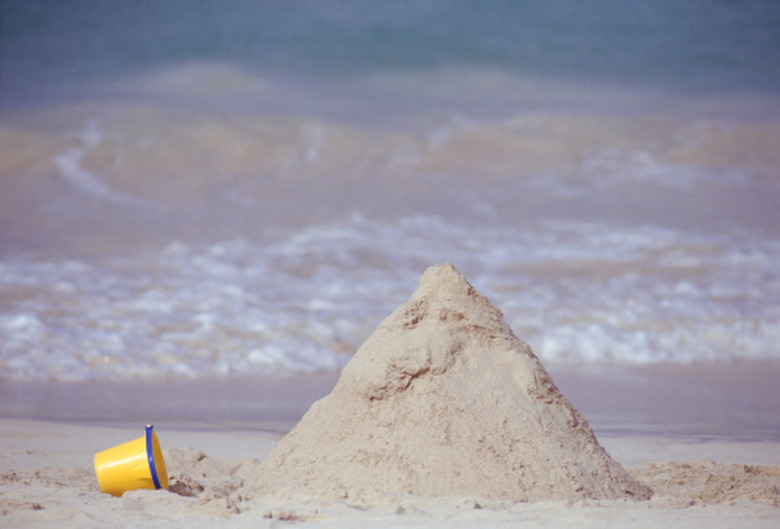Methods Of Determining The Angle Of Repose
If you have ever made castles in the sand, you might be familiar with the angle of repose. Slowly pour sand out of a bucket. It will form a cone-shaped pile. As you pour more sand onto the pile, the pile will get bigger, but it will keep the same basic shape. If you did the same thing with salt, sugar or some other granular material, it would also form a conical pile, but the shape would be slightly different. The angle between the sloping side of the cone shaped pile and the horizontal will vary from one type of material to another. This angle is called the angle of repose.
Factors Affecting Angle of Repose
Factors Affecting Angle of Repose
The individual material will affect the angle of repose, a reflection of the different coefficients of friction between different substances. The size of the particles is a factor. Other factors being equal, fine grained material will form a shallower pile, with a smaller angle of repose than coarser grains. Moisture affects the angle of repose, as anyone who has ever built a sand castle can confirm. Moist sand has a much higher angle of repose than dry sand. And the method by which the angle of repose is measured can also affect the measurement.
Tilting Box Method
Tilting Box Method
This method is appropriate for fine-grained, non-cohesive materials, with individual particle size less than 10 mm. The material is placed within a box with a transparent side to observe the granular test material. It should initially be level and parallel to the base of the box. The box is slowly tilted at a rate of approximately .3 degrees/second. Tilting is stopped when the material begins to slide in bulk, and the angle of the tilt is measured.
Fixed Funnel Method
Fixed Funnel Method
The material is poured through a funnel to form a cone. The tip of the funnel should be held close to the growing cone and slowly raised as the pile grows, to minimize the impact of falling particles. Stop pouring the material when the pile reaches a predetermined height or the base a predetermined width. Rather than attempt to measure the angle of the resulting cone directly, divide the height by half the width of the base of the cone. The inverse tangent of this ratio is the angle of repose.
Revolving Cylinder Method
Revolving Cylinder Method
The material is placed within a cylinder with at least one transparent face. The cylinder is rotated at a fixed speed and the observer watches the material moving within the rotating cylinder. The effect is similar to watching clothes tumble over one another in a slowly rotating clothes dryer. The granular material will assume a certain angle as it flows within the rotating cylinder. This method is recommended for obtaining the dynamic angle of repose, and may vary from the static angle of repose measured by other methods. When describing the angle of repose for a substance, always specify the method used.
Cite This Article
MLA
Breslin, Andrew. "Methods Of Determining The Angle Of Repose" sciencing.com, https://www.sciencing.com/methods-determining-angle-repose-8380160/. 24 April 2017.
APA
Breslin, Andrew. (2017, April 24). Methods Of Determining The Angle Of Repose. sciencing.com. Retrieved from https://www.sciencing.com/methods-determining-angle-repose-8380160/
Chicago
Breslin, Andrew. Methods Of Determining The Angle Of Repose last modified March 24, 2022. https://www.sciencing.com/methods-determining-angle-repose-8380160/
